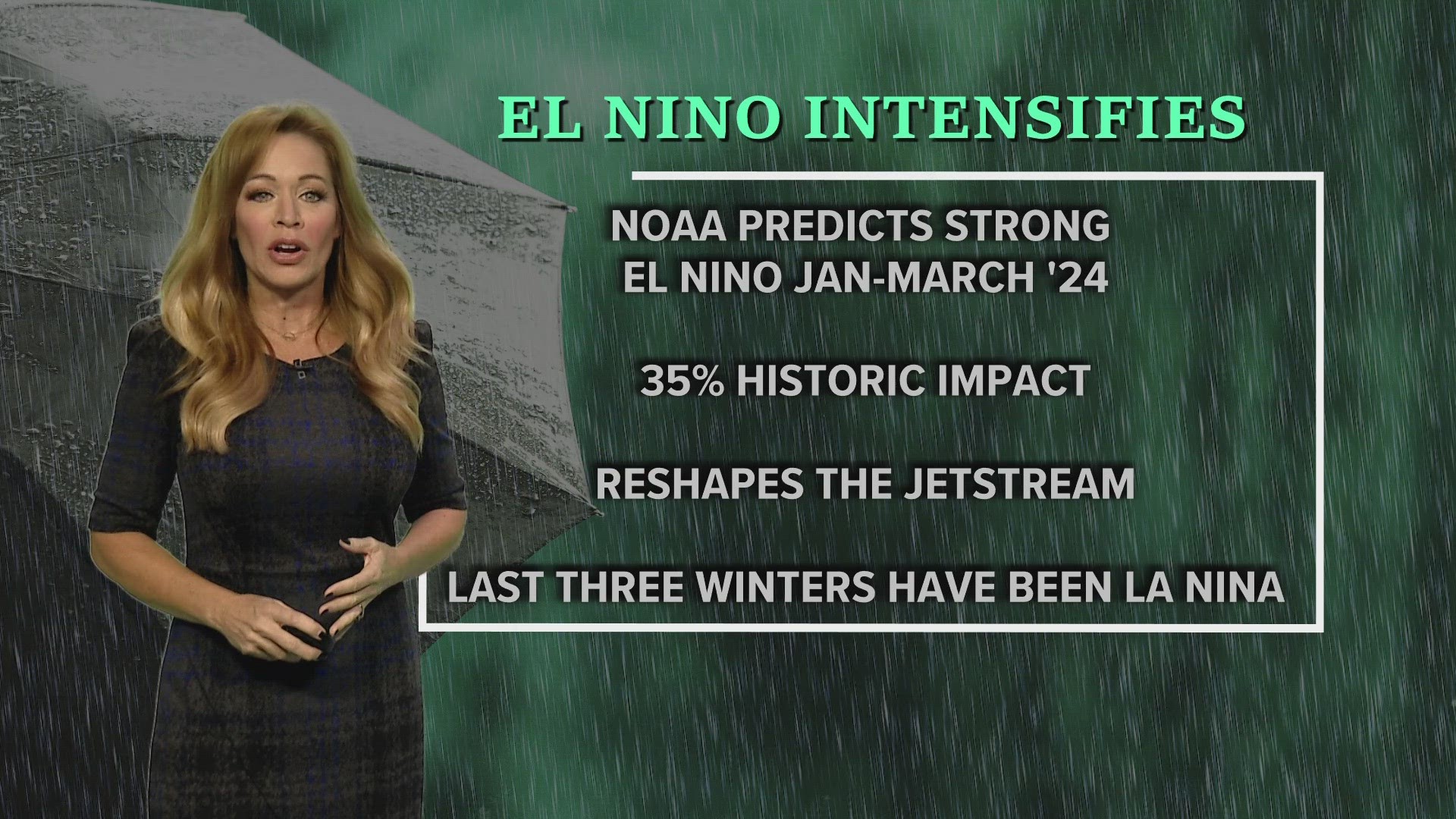PHOENIX — Winter is four weeks away and the National Oceanic and Atmospheric Administration (NOAA) is making a bold prediction. The agency issued a statement saying, “a strong El Niño is now present in the Pacific Ocean, and it continues to show signs of strengthening.”
VERSIÓN EN ESPAÑOL: ¿Qué significa para Arizona un invierno de El Niño?
What is El Niño?
El Niño is a phenomenon that occurs when the water near the equator of the eastern Pacific Ocean is at least 0.9 degrees Fahrenheit above the historical average for an extended period of time. Officially, the warm water developed in June but has continued into a mighty presence.
NOAA now saying there’s a greater than 55% chance of a strong El Niño persisting through January-March 2024. Adding that there is a 35% chance of this event becoming historically strong. The onset of El Niño is a significant reversal from the previous three winters when its cooler counterpart, La Niña, was the prevailing pattern. This flip will have significant impacts on the weather across North America throughout the winter season, some of which are already starting to be felt.
Reshapes jet stream
Although El Niño takes place in the Pacific Ocean, it reshapes the jet stream, and ultimately, the weather thousands of miles away. The weather patterns are much different than when La Niña is present, which is why long-range meteorologists are predicting this winter could be much different than recent years.
Moisture-rich storms
So, what should we expect to see across the nation during an El Niño winter? It should be a wetter winter across the South, while areas across the Great Lakes, Midwest and the northern Plains experience less precipitation and milder conditions. Along the West Coast, El Niño tends to direct moisture-rich storms into California, Arizona and the desert Southwest rather than the Pacific Northwest.
Arizona may reap some (rather wet) benefits from good old El Niño!
Arizona Weather
Arizona has seen its fair share of severe weather. Here is a compilation of videos from various storms across the Grand Canyon state.

